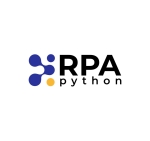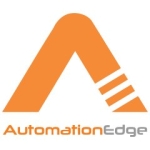What is our primary use case?
Our primary use cases are mostly for device processing, such as extracting data from PDFs and reporting it into ERP applications.
How has it helped my organization?
We have a customer who used to perform certain tasks manually. They no longer have to do that as the bot performs the tasks. They only need to review whether the bot is working as expected or not. It has significantly improved their process time, and Blue Prism has proven to be time-saving and resource-saving.
What is most valuable?
The most valuable feature is that it is more secure and reliable. It is also why big companies such as banks mainly use Blue Prism.
What needs improvement?
Blue Prism doesn't have a web orchestration or control room where businesses can directly check the trends or carry out the process directly from the URL without downloading additional software like Nextiva on their machine.
Some other features are also missing in Blue Prism. For example, the record and play feature makes development faster, but it is not there in Blue Prism. When you start the recording and do the activity, it automatically generates the steps. So that feature needs to be included.
For how long have I used the solution?
I have about four years of experience with Blue Prism. We're working with the previous update.
What do I think about the stability of the solution?
Blue Prism is a stable product. But it's not very flexible when it comes to integrations. Blue Prism's forum is smaller, unlike some other RPA tools, where there is a large forum with a wide range of integrations readily available in the marketplace. If you want to integrate any solution from the Digital Exchange, you may not find as many options as compared to other tools. So, while Blue Prism is stable and secure, it may not be as flexible as other RPA tools.
What do I think about the scalability of the solution?
When compared to other RPA tools, Blue Prism is highly scalable and reliable. I have deployed Blue Prism processes that required deployment for up to fifteen users per process. Due to other factors, deployment permission is needed if the workload exceeds the system's capacity. Typically, it runs smoothly without issues, but in cases where the workload surpasses our support team's capabilities, we can deploy up to fifteen percent of the portal's resources, and the system continues to function effectively even at that scale.
How are customer service and support?
In the beginning, when we were working with Blue Prism version 5, there were some issues after installing the latest update. So we decided not to install the latest version and only update after some time. Eventually, it became stable without any issues. When we needed to contact support for updates, we had to reach out to group parameters.
Most of the time, they say it is a known issue and will fix it with the next update. When we faced challenges, like setting up a load-balancing server, the support was good, and we could set it up without any issues. They provide good support for known issues but may not be able to fix some problems.
How was the initial setup?
The initial setup process is easy compared to other applications. Our customers use the on-prem version because they are old customers; at that time, the cloud version was unavailable.
To deploy the solution, it is advisable to deploy it in an environment that closely resembles the development environment. It includes having similar desktop resolution, applications, and access. In case of any changes in common objects, thorough end-to-end testing of use cases is necessary to ensure that the existing solutions are not affected. It can be a time-consuming process due to the increased amount of testing required.
What about the implementation team?
For the deployment team, it would be best if we have a separate chain management process to ensure security and prevent developers from accessing the production environment. Having dedicated resources for chain management would be beneficial not only for Blue Prism but also for other sectors. We can recommend tools to ensure coding standards are being maintained and submit them to the chain management team.
For maintenance, we should have a separate support model in place. Like in any other support model, it would include a support team with levels 0, 1, 2, and 3. The support team would be responsible for automated processes that provide information on the version, system improvements, and high memory usage alerts. This way, the support team can act accordingly and increase the model size if needed.
Having these measures in place would make maintenance easier. Otherwise, if the process runs at its peak level, it may not run as smoothly as needed. Without automated alerts, maintenance becomes more difficult, and the process may not function properly. Implementing these setups could be useful and can be delivered through email.
What's my experience with pricing, setup cost, and licensing?
The pricing or licensing costs of Blue Prism are around $15,000 per year, primarily based on the number of processors run in parallel.
What other advice do I have?
My advice would be first to assess your requirements. If you prioritize reliable security, Blue Prism could be a good choice for you, but it may come with a higher development cost than other vendors. Additionally, if you choose Blue Prism, you should ensure that integration is streamlined by developing your own code.
When it comes to business, the process assessment should be critical in finding the right solution. Not all processes are suitable for automation, and there is a risk that ROI may not meet expectations if the process is not suitable. It's important to consider the required equipment and ensure the solution is designed to handle potential issues, such as offline support. The solution should also be designed with the expectation of needing support once deployed. During development, it's important to follow best practices to ensure the solution is efficient and has a high ROI. It's also important to ensure that the solution is reliable and does not break. Manual intervention may be necessary if there are any issues, so it's important to have a plan in place for business continuity.
Overall, I would rate Blue Prism a seven out of ten because it has stability issues.
Which deployment model are you using for this solution?
On-premises
Disclosure: My company has a business relationship with this vendor other than being a customer. Implementer























